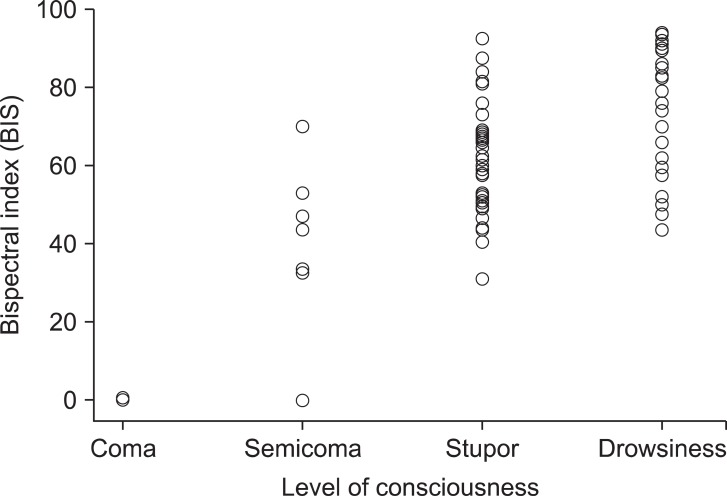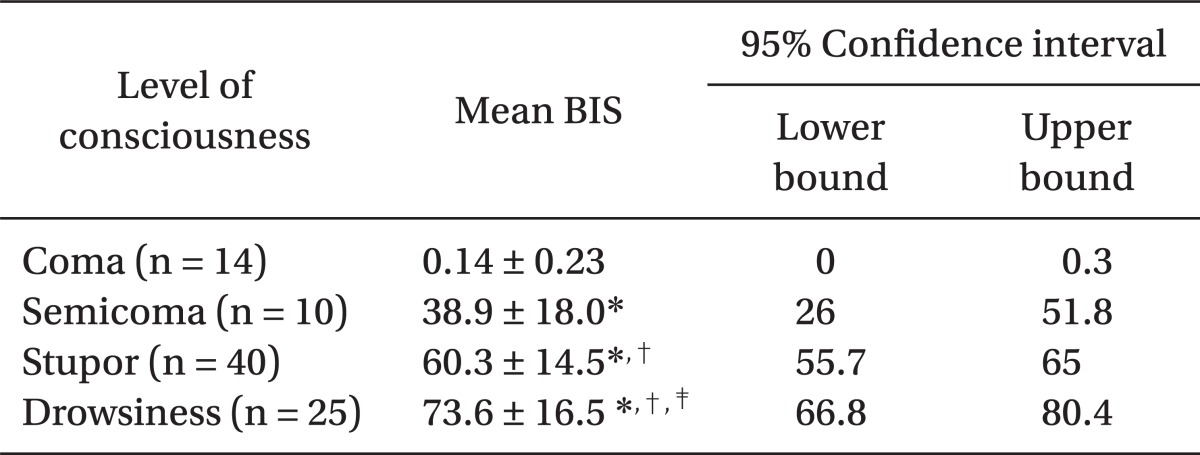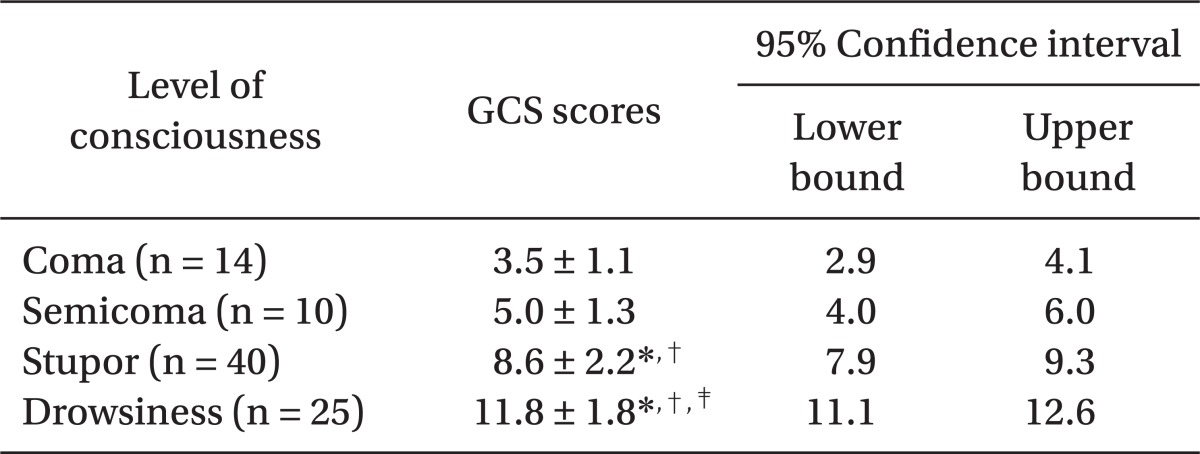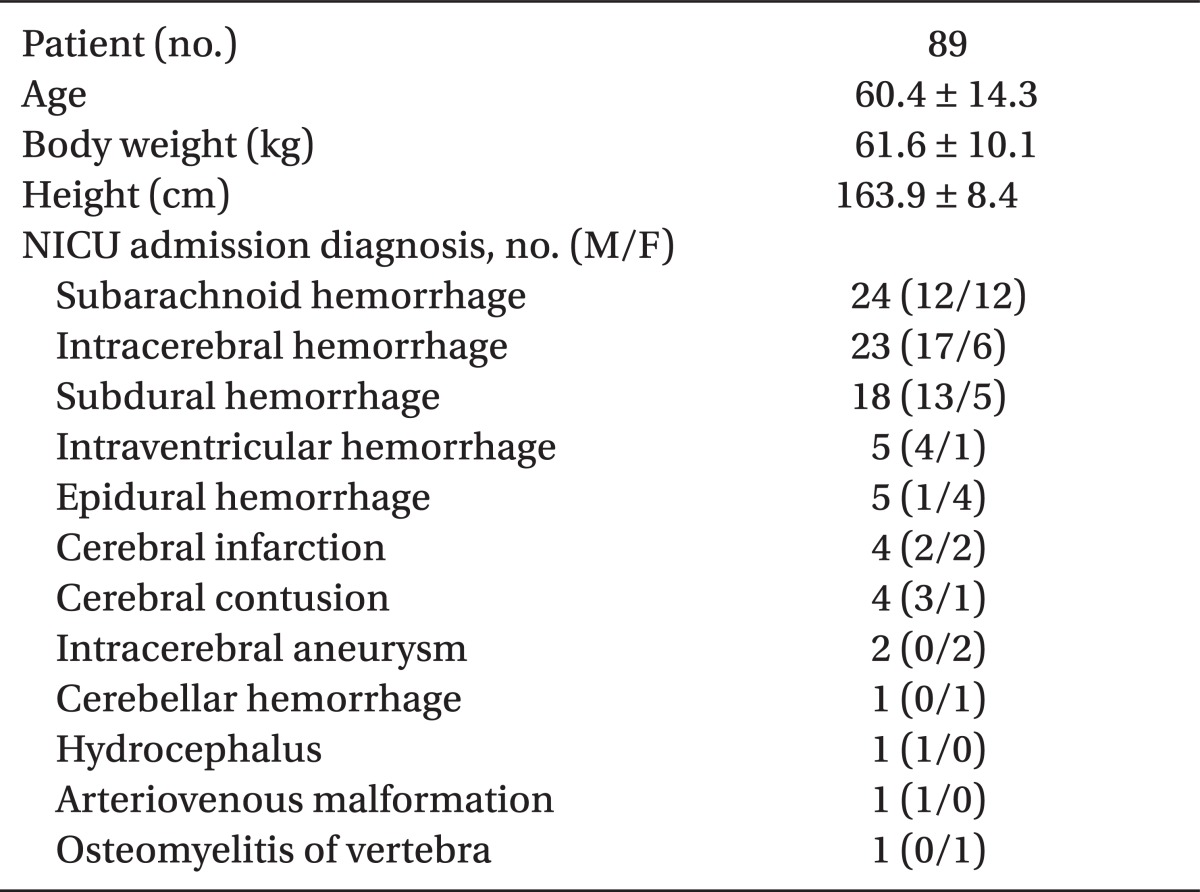1. Kim HM, Shin SW, Yoon JY, Lee HJ, Kim KH, Baik SW. Effects of etomidate on bispectral index scale and spectral entropy during induction of anesthesia by means of the raw electroencephalographic and electromyographic characteristics. Korean J Anesthesiol. 2012; 62:230–233. PMID:
22474548.

2. Seol TK, Han MK, Lee HJ, Cheong MA, Jun JH. Bispectral index and their relation with consciousness of the patients who receive desflurane or sevoflurane anesthesia during wake-up test for spinal surgery for correction. Korean J Anesthesiol. 2012; 62:13–18. PMID:
22323948.

3. Choi SS, Kim JS, Park IK, Lee G, Hahm KD. Changes in the bispectral index and cerebral oxygen saturation during neuroendovascular intervention under general anesthesia. Korean J Anesthesiol. 2012; 62:98–100. PMID:
22323964.

4. Kang MH, In CB, Kim MH, Lim KJ, Park EY, Lee HM, et al. Inappropriate elevation of bispectral index values in robot assisted thyroidectomy with electromyographic endotracheal tube -A case report-. Korean J Anesthesiol. 2011; 61:511–514. PMID:
22220230.

5. Bae JY, Choi do Y, Woo CH, Kwak IS, Mun SH, Kim KM. The BIS and hemodynamic changes in major burn patients according to a slow infusion of propofol for induction. Korean J Anesthesiol. 2011; 60:161–166. PMID:
21490816.

6. Kwon MY, Lee SY, Kim TY, Kim DK, Lee KM, Woo NS, et al. Spectral entropy for assessing the depth of propofol sedation. Korean J Anesthesiol. 2012; 62:234–239. PMID:
22474549.

7. Lee JI, Jun JH, Kim KS, Suh JK. Effect of intravenous propofol and fentanyl on bispectral index changes during endotracheal suction in ICU conscious patient. Korean J Anesthesiol. 2007; 52:156–160.

8. Rowley G, Fielding K. Reliability and accuracy of the Glasgow coma scale with experienced and inexperienced users. Lancet. 1991; 337:535–538. PMID:
1671900.

9. Sessler CN, Gosnell MS, Grap MJ, Brophy GM, O'Neal PV, Tesoro EP, et al. The Richmond Agitation-Sedation Scale: validity and reliability in adult intensive care unit patients. Am J Respir Crit Care Med. 2002; 166:1338–1344. PMID:
12421743.
10. Riker RR, Fraser GL, Simmons LE, Wilkins ML. Validating the Sedation-Agitation Scale with the Bispectral Index and Visual Analog Scale in adult ICU patients after cardiac surgery. Intensive Care Med. 2001; 27:853–858. PMID:
11430541.

11. Walther SM, Jonasson U, Gill H. Comparison of the Glasgow Coma Scale and the Reaction Level Scale for assessment of cerebral responsiveness in the critically ill. Intensive Care Med. 2003; 29:933–938. PMID:
12734651.

12. Layon AJ, Gabrielli A, Friedman WA. Textbook of neurointensive care. 2004. Philadelphia: Elsevier Inc;p. 747–755.
13. Deogaonkar A, Gupta R, DeGeorgia M, Sabharwal V, Gopakumaran B, Schubert A, et al. Bispectral Index monitoring correlates with sedation scales in brain-injured patients. Crit Care Med. 2004; 32:2403–2406. PMID:
15599143.

14. Paul DB, Umamaheswara Rao GS. Correlation of Bispectral Index with Glasgow Coma Score in mild and moderate head injuries. J Clin Monit Comput. 2006; 20:399–404. PMID:
16964535.
15. Schnakers C, Majerus S, Laureys S. Bispectral analysis of electroencephalogram signals during recovery from coma: preliminary findings. Neuropsychol Rehabil. 2005; 15:381–388. PMID:
16350979.

16. Hsia SH, Wu CT, Wang HS, Yan DC, Chen SC. The use of bispectral index to monitor unconscious children. Pediatr Neurol. 2004; 31:20–23. PMID:
15246487.

17. Cho JH, Cheong SH, Kim HS, Kim SH, Cho KR, Lee SE, et al. Bispectral index monitoring to assess the level of consciousness in patients with brain injury. Korean J Anesthesiol. 2009; 57:185–189.

18. Gill M, Green SM, Krauss B. Can the bispectral index monitor quantify altered level of consciousness in emergency department patients? Acad Emerg Med. 2003; 10:175–179. PMID:
12574017.

19. Sigl JC, Chamoun NG. An introduction to bispectral analysis for the electroencephalogram. J Clin Monit. 1994; 10:392–404. PMID:
7836975.

20. Zandbergen EG, de Haan RJ, Stoutenbeek CP, Koelman JH, Hijdra A. Systematic review of early prediction of poor outcome in anoxic-ischaemic coma. Lancet. 1998; 352:1808–1812. PMID:
9851380.

21. Rampil IJ. A primer for EEG signal processing in anesthesia. Anesthesiology. 1998; 89:980–1002. PMID:
9778016.








 PDF
PDF Citation
Citation Print
Print



 XML Download
XML Download